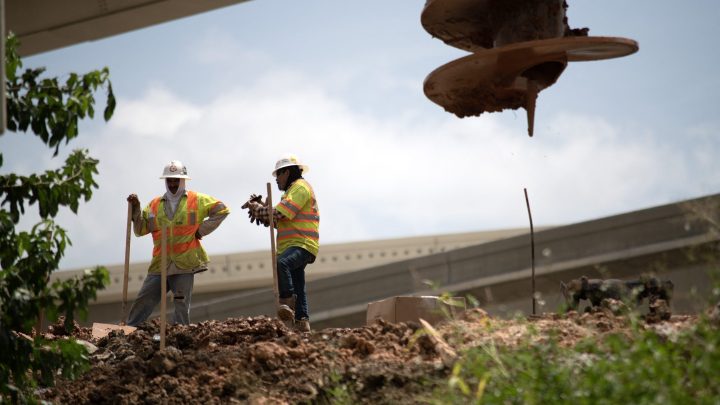
The extreme heat takes a physical toll — and an economic one
The extreme heat takes a physical toll — and an economic one

Telitha Solis keeps a towel in her pocket just to wipe the sweat off her face.

She spends her workdays rushing from plane to plane on the hot tarmac in 100-degree temperatures at Houston’s George Bush Intercontinental Airport.
The 56-year-old airplane cabin cleaner empties seat pockets, cleans lavatories, floors, galleys and wipes down tray tables in minutes. She said she cleans about 16 planes a day — sometimes with just one other person — with the air conditioning turned off and few opportunities for water breaks.
“You are dripping in sweat,” she said. “When you’re inside the plane, you barely can breathe. It’s better outside than it is inside the aircraft.”
Exposure to the extreme heat doesn’t just leave her exhausted; she’s seen it impact worker health. Earlier this summer, a colleague got sick and began to throw up.
“She started sweating really bad, she was confused, didn’t know what was going on,” Solis said.
As sizzling temperatures endure, the costs of this summer’s historic heat keep rising, hitting industries like agriculture particularly. In Texas, the state economy is estimated to lose out on almost $10 billion if the heat wave lasts through the end of August. But elevated temperatures also take a toll on health — especially for low-income workers — which has a cost of its own.
Some 1,600 heat-related emergency room visits and seven heat-related deaths have been reported to the city of Houston since May 1. Statewide last year, heat-related deaths rocketed to a record 279 people, according to Texas Tribune analysis of two decades of data.
Dr. Roxana Khozein-Carrera works at the ER at Ben Taub Hospital, a public hospital that often treats low-income Houstonians.
“All the people that I’ve seen here at Ben Taub for heat exhaustion have been mostly workers,” she said, “Most of them have been construction workers who work outside.”
In the emergency room, Khozein-Carrera advises workers to take preventative measures like taking water breaks and going into shaded areas.
“The best thing to do is for people to start working earlier in the morning, take longer breaks during the hottest part of the day, and then perhaps work later in the evening,” said Dr. David Persse, Houston’s chief medical officer. He said people who work in the sun all day are among the groups most vulnerable to heat-related illness during the summer.

But many workers are not able to choose their work schedules. Some may not even be allowed breaks or feel empowered to ask for one, Khozein-Carrera said.
One patient in the ER for heat exhaustion told Khozein-Carrera that because of a new Texas law going into effect soon ending mandatory water breaks, her worksite stopped offering them. Khozein-Carrera said while she explaining the importance of water breaks to prevent heat exhaustion, the worker decided to quit.
“She said it was not worth it for her to continue that job,” Khozein-Carrera said.
But quitting has its own cost, which can hit these families hard.
“They’re probably living on a day-to-day paycheck,” she said. “Sometimes for them, the only option is either, ‘OK, I’m going to get worse in my health,’ or ‘I don’t have money for the next couple of weeks and I have to figure something else out.’”
But all the heat-related hospitalizations also have a health care cost — one that researchers still don’t fully grasp. The Center for American Progress estimated the extreme heat each summer equals $1 billion in health care costs in the U.S. each summer.
Rice University health economist Vivian Ho said while that estimate falls short of accounting for a number of cost variables, whatever the total is, “there’s no doubt it’s a very large number.”
Ho said she’s concerned about the overburdened public hospitals, clinics and ambulance services that treat workers and others impacted by the heat.
“What bucket of resources do you pull those health care expenditures out of?” she said.
Many of the affected workers are uninsured or underinsured, while the publicly funded hospitals that support underserved communities are already short on money.
As the people working in construction and transportation and doing other essential jobs are exposed to extreme heat, the money to treat heat-related illness will have to come from somewhere.
“We’re either going to have even more expenditures that taxpayers have to pay or these people are going to be underserved and, unfortunately, some of them could die because of that,” she said.
There’s a lot happening in the world. Through it all, Marketplace is here for you.
You rely on Marketplace to break down the world’s events and tell you how it affects you in a fact-based, approachable way. We rely on your financial support to keep making that possible.
Your donation today powers the independent journalism that you rely on. For just $5/month, you can help sustain Marketplace so we can keep reporting on the things that matter to you.


















